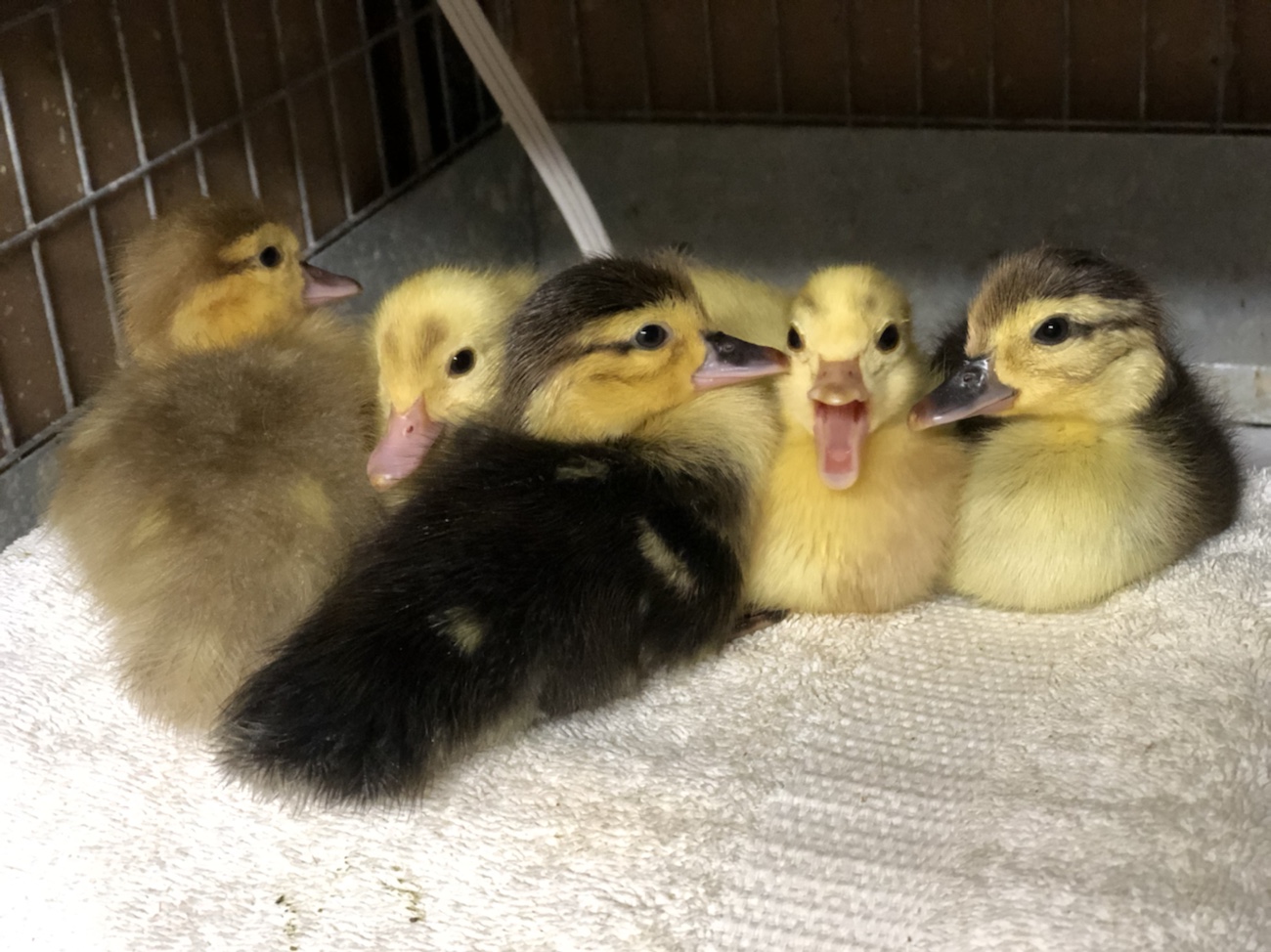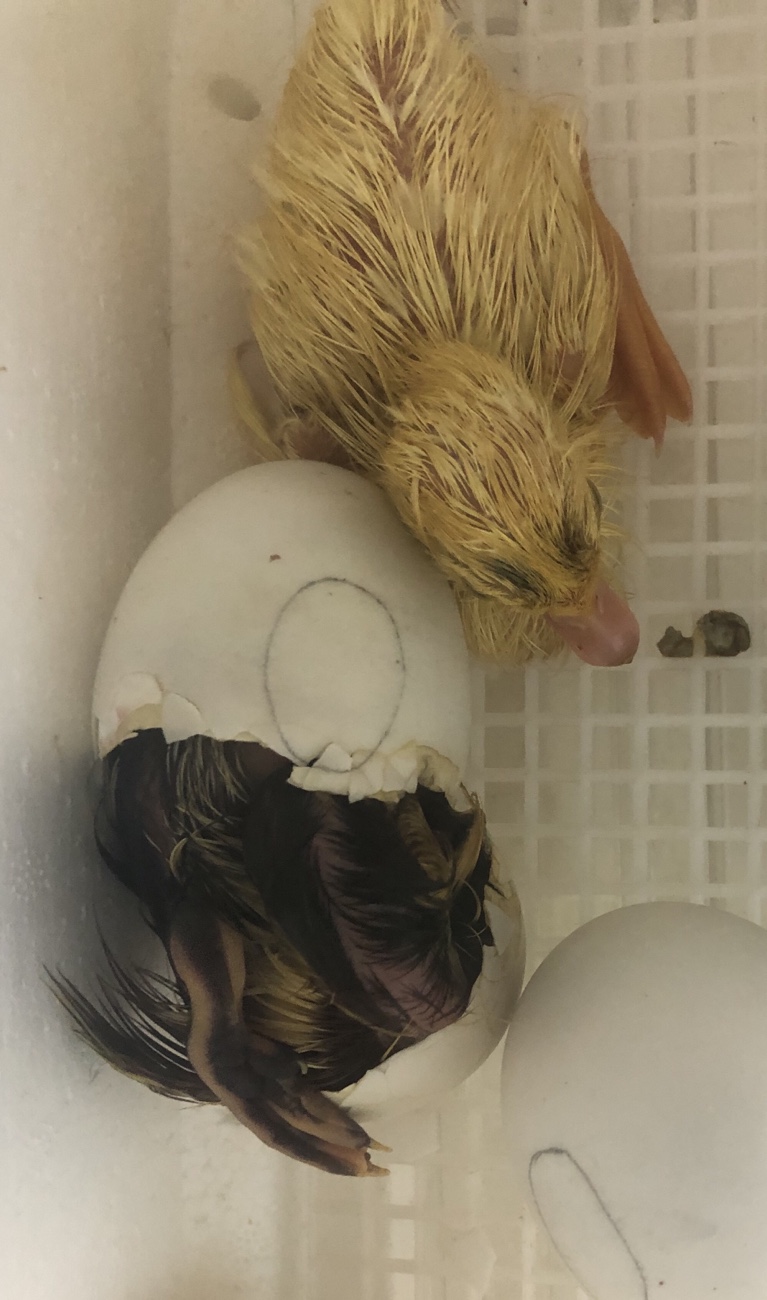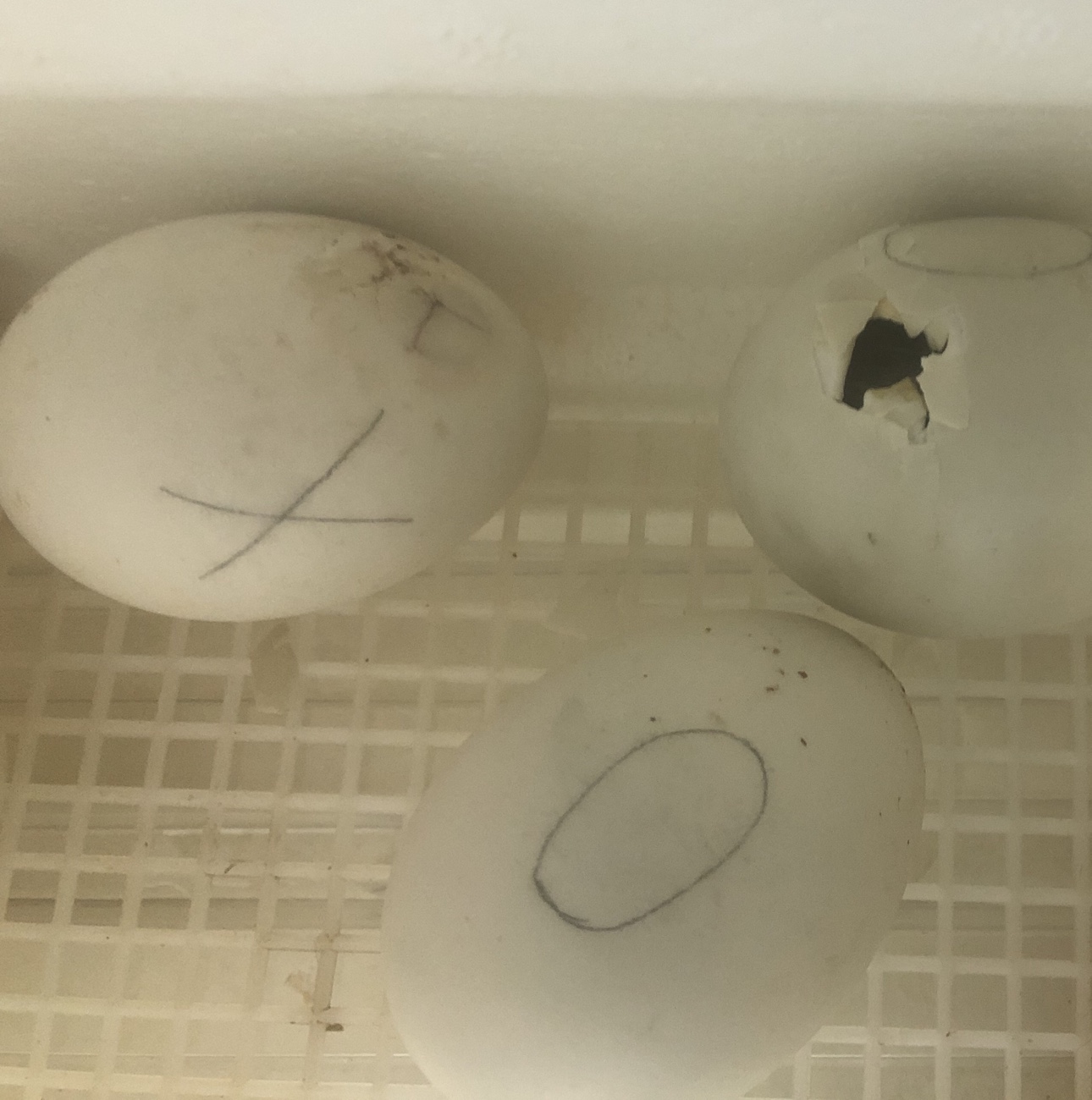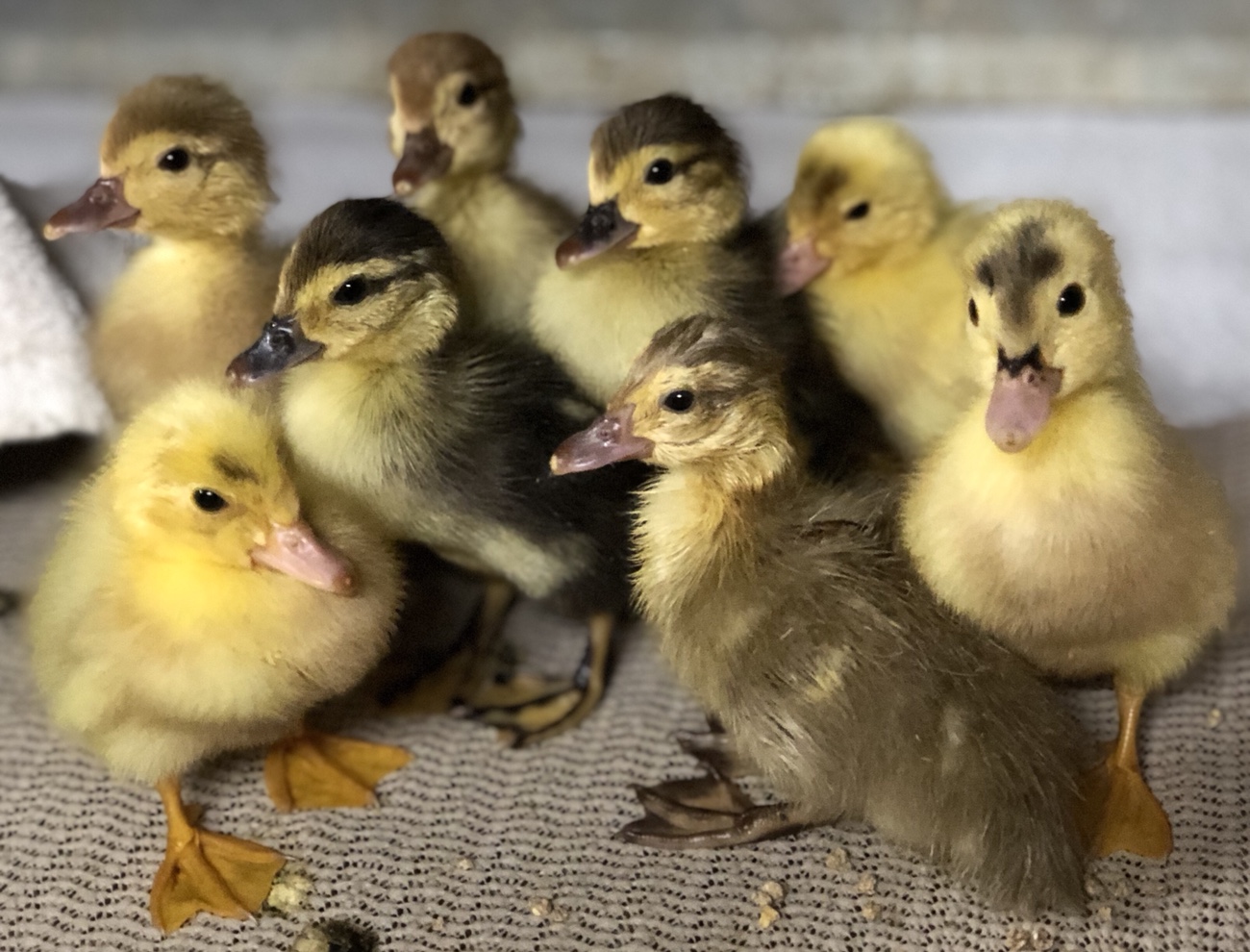
The hatch is over, and there are ten energetic ducklings in the brooder. As with nearly every hatch, it was bittersweet: while it was, overall, a great hatch, it didn’t play out without some sadness.
I’m a self-professed “helper”, and, now, with many hatches of different types of fowl under my belt, an experienced one. I discussed why I choose to assist, judiciously, in a recent post. In this hatch, three ducklings could have died in their shells if not assisted; instead, all three are here and doing well. Why do I think they might have died instead of hatching, if left on their own? Because they were malpositioned (feet over head) and ended up being shrinkwrapped in the shell’s inner membranes.
Shrinkwrapping is what happens when the membrane dries tightly around the hatchling. It can be caused by the humidity being too low during incubation or the hatch, but I know that in these cases, the shrinkwrapping happened because of the length of time that elapsed from when the ducklings pipped externally to when they were ready to hatch – if they take too long (trying to get into position, absorbing yolks, and/or waiting for the blood vessels to dry up), they end up vacuum-sealed in the egg, which can become a tomb.
I’ve hatched enough to recognize the signs of a duckling in trouble. Each of these had pipped but made no progress for more than 24 hours. That, in itself, isn’t necessarily reason to intervene, but when the membranes turn a brownish color around the pip, it often indicates drying inside the shell. When I carefully widened the pip hole to get a look at what was going on inside, I could see the telltale signs of shrinkwrapping (the inner membrane pulled away from the outer and tight around the duckling). I could also see that the blood vessels were active, and one of the ducklings was yawning (still absorbing yolk), signs that they weren’t ready to hatch yet. To facilitate smooth hatching, I gently widened the hole around the most-ready-to-hatch duckling’s bill to prevent obstruction, and applied a thin coating of coconut oil to exposed membrane, keeping it moist. I also carefully chipped away some of the shell.
The first of the three assisted ducklings pushed itself out of its shell shortly after I applied the coconut oil, and, after drying, joined the other hatchlings out in the brooder. The other two needed more time to prepare for the hatch, so I went to bed and hoped that they might be out in the morning…but they weren’t. Again, little progress appeared to have been made, so I assessed their hatch readiness by examining the inner membranes (vessels receding) and moistened the membranes with coconut oil, gently pushed the inner membrane back to allow free bill movement, chipped away some of the shell (leaving the outer membrane intact), then placed them back in the incubator so that they could hatch when ready. In short order, both pushed their heads out of the shells, and soon after, they had both hatched completely.

Now for the sad part: just one duckling failed to hatch, though it tried mightily. This duckling externally pipped but broke a blood vessel in the process. The pip looked a little strange, like a bruise, and also appears to be on the wrong end of the egg.

Ducklings that pip at the wrong end of the egg can still hatch successfully, so I left it alone. Later, when checking on the eggs, I noticed a trail of blood (somewhat dry by that time) down the side of the shell near the pip. When I took the egg out and examined it, I could see active veins, so intervention wasn’t possible at that point. I placed the egg back in the incubator and hoped that with time, the veins would dry and the duckling would hatch, but it wasn’t to be. After the hatch, when I cleaned the hatcher, I could see that more blood had dripped out of the shell than had first appeared…the poor duckling most likely exsanguinated. It’s incredibly frustrating to be unable to help a baby animal in its time of need, but I could take some small measure of comfort in knowing that I hadn’t caused its demise by being overeager.
The “terrible ten” (haha) have been keeping me busy. Since I spoke to them while they were still in their eggs, they know my voice and start running around like little wild things when I address them. It’s amazing how strong and hardy these little ones are! Though no longer wild tree ducks, they have retained the the evolutionary trait of sharp nails of their feet – like kittens’ claws – so the rubbery shelf liner strip that I put in the brooder to help them get traction was actually catching their little nails. I replaced it with paper towels (which can be too slippery for young chicks), and then also realized that I’ve never had a Muscovy duckling hatch with splay leg – must be those sharp nails!

There are some exciting “firsts” to come for these babies: first swim, first taste of fermented feed, first feel of grass underfoot. Stay tuned for more of their adventures!

Comments are closed.